- Bernard Preston homepage
- Our green kitchen
- Freezing Broad Beans
Freezing broad beans
Freezing broad beans is important if you plan to use them for the treatment of Parkinson's disease; you need a regular supply for the whole year.
The recommended starting dose is about six beans twice a day; you will have to cut back on your medication.
Assuming you can eat them fresh for say four months, you would need to freeze around 3,000 beans for the rest of the year. It will be a lot of work but it's all good food stored up.
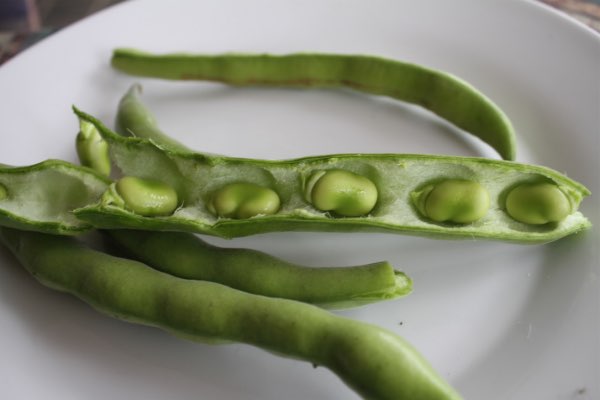 Fresh young broad beans are a treat.
Fresh young broad beans are a treat.I would wait for them to get larger than this for freezing but for fresh, green broad beans these are perfect. Do it before they start to dry off; then the skins get very chewy.
Start by picking as many pods as you think you can easily shell at one sitting; use secateurs. Finish the lot since they begin to lose water and the natural sugars turn quite quickly to starch.
Two people working steadily at blanching the beans would not find it too onerous.
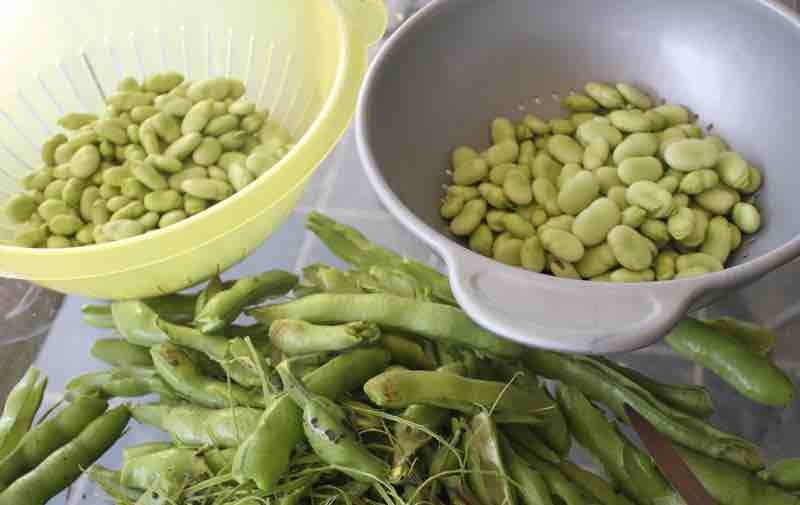
Freezing broad beans
- With a sharp knife cut the end and pull off the string. You might get some ideas from shelling large green beans; there's an art to doing it quickly and efficiently.
- Squeeze the large green broad beans out with your thumb.
- Pour boiling water into a large pot and bring it back to bubbling merrily.
- Have a large bowl of ice-water at the ready.
- Drop your shelled beans in batches into the hot water and bring the pot back to a hard boil for about three minutes.
- Scoop them out with a holey ladle and drop them into the ice-water. This is the essence of blanching. It stops all enzyme action; the conversion of the sugars to starch.
- Scoop the beans onto a series of dry kitchen towels.
- When dry put them into bags and store on a dedicated shelf of the freezer; or in a large bucket. Labelling is always sensible but to be honest I don't do it; you will finish them before the year is up.
- Perhaps count and put about 100 beans in a bag; enough for one week.
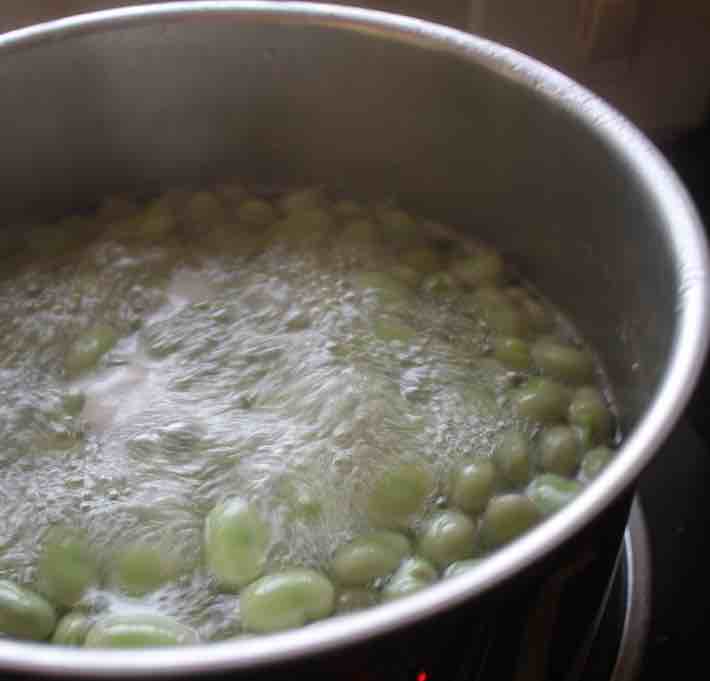
Freezing is a lot easier to my mind that putting them up in bottles; but it will take up space in the freezer.
All veggie growers need a big deep-freezer in any case; it's the simplest way of putting up a lot of excess garden produce.
For example also important to us is preserving jalapenos and peppadews. Broad beans have little flavour but these mild chilies give our "Eggs Parkinson's disease" a bit of zip.
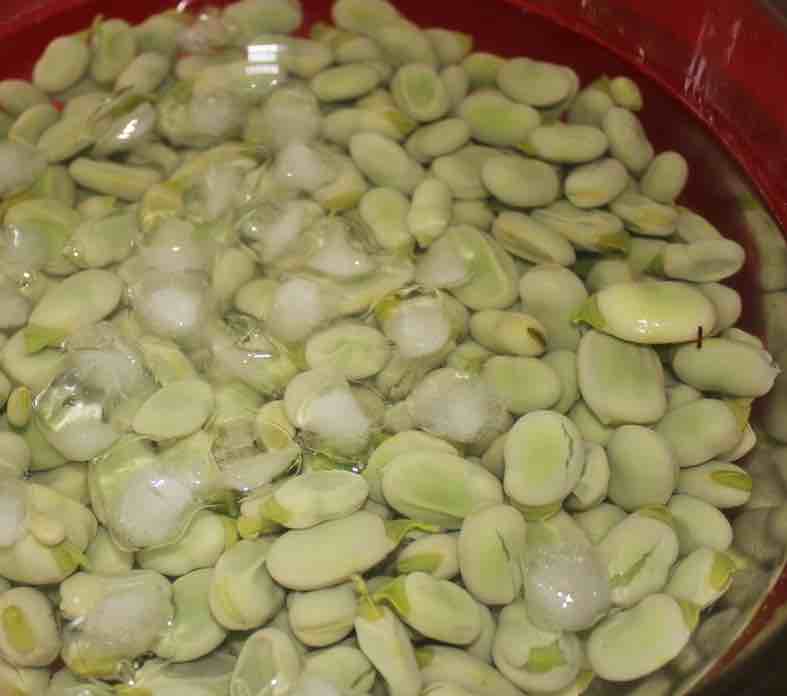 Chill the beans in ice water
Chill the beans in ice waterNow dry the blanched and chilled broad beans on a kitchen towel. Then place them in bags and pop them into the freezer.
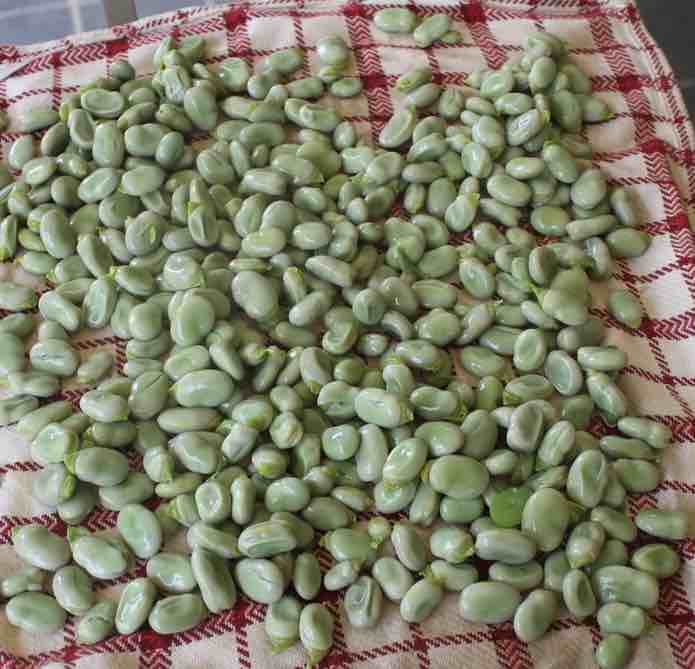 Dry the blanched beans
Dry the blanched beansSkinning broad beans
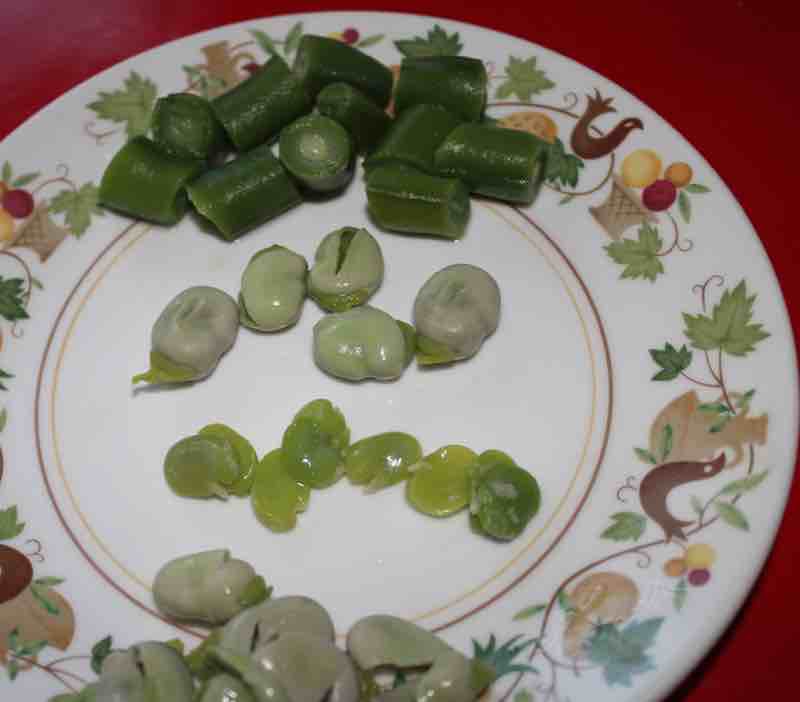
Legumes in general have a very low glycemic-index; the starch is converted slowly to glucose in the bloodstream. So there will be no insulin-storm to store those carbs as fat. If you are diabetic then test yourself.
Home testing for prediabetes isn't difficult; a couple pricks of the finger.
However there is a common practice of double-shelling broad beans; it's also called skinning. Mostly it is done because it is difficult to get them when they are still fresh and young. If you are growing them yourself then there certainly is no need.
If you remove those skins then the GI shoots up very high to 79; much of the fibre has been removed so they are rapidly digested. It's a practice to avoid; besides it is very tiresome and they lose that "subsequent meal effect."
Notice the skinned broad beans above; that practice should be shunned by all who are obese or are on a ketogenic diet that forbids all legumes. Actually we should all avoid it; it's not sensible, yet is commonly done.
L-dopa in broad beans
L dopa is the active phytonutrient in broad beans that is so beneficial; it can cross the blood-brain barrier and be used to synthesise the neurotransmitter.
It also just makes us feel better about ourselves and life in general; just look at the demeanour on the faces of so many but not all of those suffering from Parkinson's disease.
Here's the thing; there is even more levodopa to give it the full name in the young pods than in the seeds; so this is a far easier and better way of freezing broad beans.
- Pick young broad beans pods; in this instance you should wash them.
- Top and tail them.
- Drop them into the boiling water and thence into the ice after three minutes.
- Dry the young pods as before and again freeze them.
- Bob's your uncle; what could be easier?
If you are freezing broad beans for the treatment of Parkinson's disease, or if you are starting a tremor, then I would begin with two young pods for breakfast; and again for supper.
Eggs Parkinson's disease is a favourite dish in our family. I have had an essential tremor for thirty years; broad beans definitely help. They look like little grey ticks in the photo below.
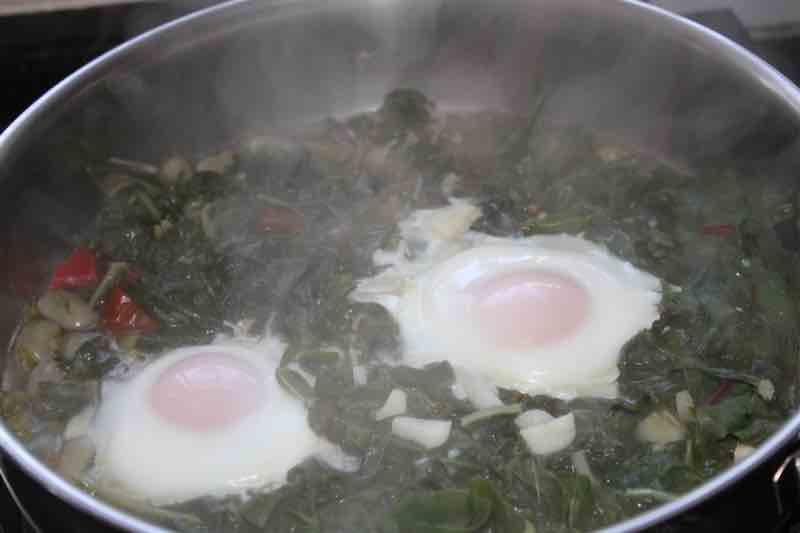
Dosage for Parkinson's Disease
Growing and freezing broad beans is not something that a person with frank Parkinson's disease could readily do on their own. They are being used for their pharmaceutical properties; the dose as with all medicines needs to be carefully monitored. Perhaps it is a parent or other loved one that you are considering helping.
If the patient is a gardener they could learn how to plant broad beans; but often there would not be the motivation.
Growing, harvesting and podding the beans might be too difficult but they could certainly help with the blanching; get everyone on board. It has to be a family affair.
Why would you do this when you can get L-dopa in pill form? Talk to anyone with Parkinson's disease and you will soon find out that the medication is expensive and one has surges of too little and then not enough of the hormone flowing in the blood stream. Growing and freezing broad beans has a much smoother effect.
And the medication works reasonably well for a couple years but then begins to tail off as the disease progresses. Freezing broad beans works far better for about two-thirds of folk suffering from the condition.
Important: Overdosing on L-dopa
Now this is important; if you are already taking a dopamine drug then you will have to gradually decrease the dose as you start enjoying your frozen broad beans twice a day. One can overdo it and that can have serious consequences[1]. In fact this is best done in collaboration with your doctor; he may be skeptical but tell him that the research is strong. Family should be involved.
Other benefits: Fibre, B-vitamins and wet AMD
Of course there are many other benefits that come from freezing broad beans. After soy foods they are the richest source of vegetable protein, large amounts of fibre and B-vitamins.
The L-dopa in broad beans gives protection against the very serious form of wet macular degeneration.
Protein in broad beans
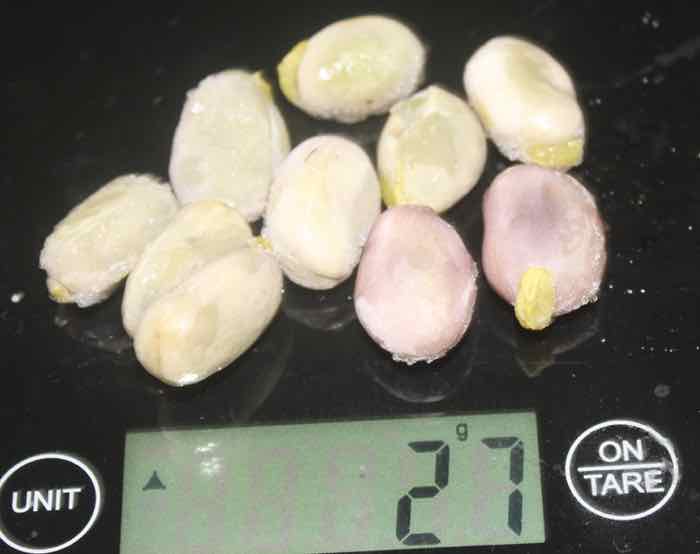 10 broad beans weigh about 27 grams
10 broad beans weigh about 27 gramsWhilst there is controversy over how much protein we should be having in the middle years, it is universally agreed that children and the elderly should be enjoying extra; it lessens the likelihood of frailty syndrome.
100 grams of the green mature seeds contain 26g of quality amino acids; roughly half of the recommended daily allowance of protein.
For even more protein allow the seeds to mature and then pod them. For the treatment of Parkinson's disease enjoy at least some whole whilst still young.
"Rising food and energy prices are striking at sub-Saharan Africa's most vulnerable, with 123 million people acutely nutritionally insecure.”
- International Monetary Fund (2022)
Freezing broad beans would contribute to sufficient protein for the whole year. By all means throw in an egg or glass of milk to ensure a complete food; but they are exceptional in that they are the only common legume that has all nine essential amino acids.
Broad beans on toast
These broad beans on toast are a breeze; high in vegetable protein with added feta cheese.
Call it a bruschetta if you want to be fancy; notice both whole pods and those that have been shelled.
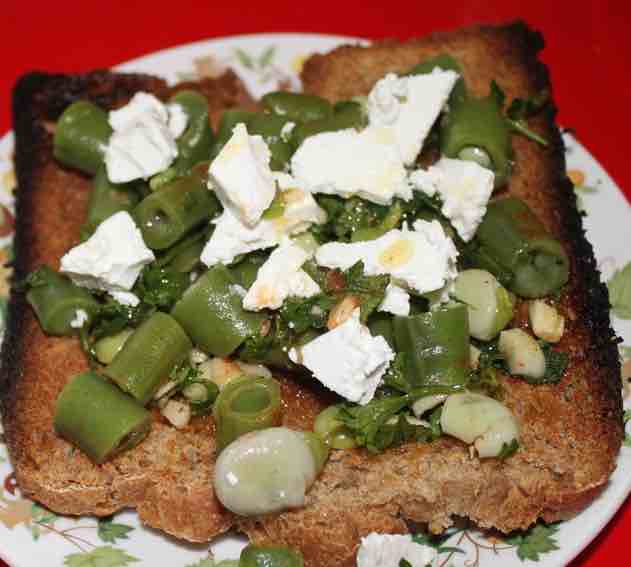
Freezing broad beans
Freezing broad beans when you have a glut is very simple. A whole year's supply of good quality protein really is possible.
When browsing use right click and "Open Link in New Tab" or you may get a bad gateway signal.
Newsletter
Our newsletter is entitled "create a cyan zone" at your home, preserving both yourself and Mother Earth for future generations; and the family too, of course. We promise not to spam you with daily emails promoting various products. You may get an occasional nudge to buy one of my books.
Here are the back issues.
- Lifestyle and ideal body weight
- What are ultra-processed foods?
- Investing in long-term health
- Diseases from plastic exposure
- Intensive lifestyle management for obesity has limited value
- A world largely devoid of Parkinson's Disease
- The impact of friendly bacteria in the tum on the prevention of cancer
- There's a hole in the bucket
- Everyone is talking about weight loss drugs
- Pull the sweet tooth
- If you suffer from heartburn plant a susu
- Refined maize meal and stunting
- Should agriculture and industry get priority for water and electricity?
- Nature is calling
- Mill your own flour
- Bake your own sourdough bread
- Microplastics from our water
- Alternative types of water storage
- Wear your clothes out
- Comfort foods
- Create a bee-friendly environment
- Go to bed slightly hungry
- Keep bees
- Blue zone folk are religious
- Reduce plastic waste
- Family is important
- What can go in compost?
- Grow broad beans for longevity
- Harvest and store sunshine
- Blue zone exercise
- Harvest and store your rainwater
- Create a cyan zone at your home
Did you find this page interesting? How about forwarding it to a friendly book or food junkie? Better still, a social media tick would help.
- Bernard Preston homepage
- Our green kitchen
- Freezing Broad Beans
Address:
56 Groenekloof Rd,
Hilton, KZN
South Africa
Website:
https://www.bernard-preston.com